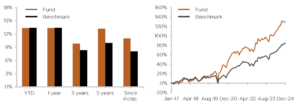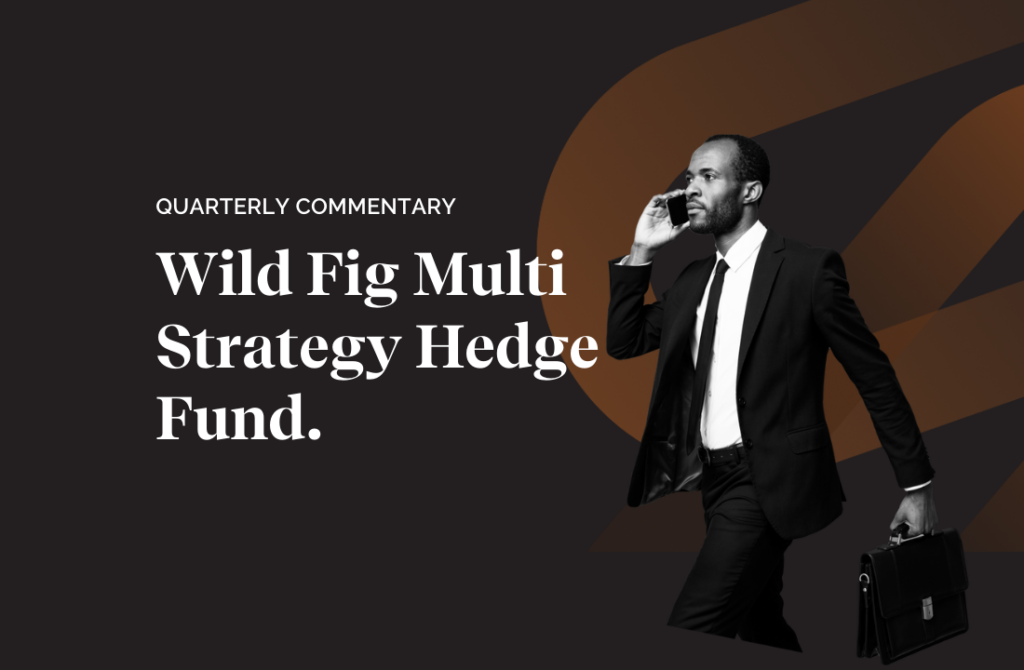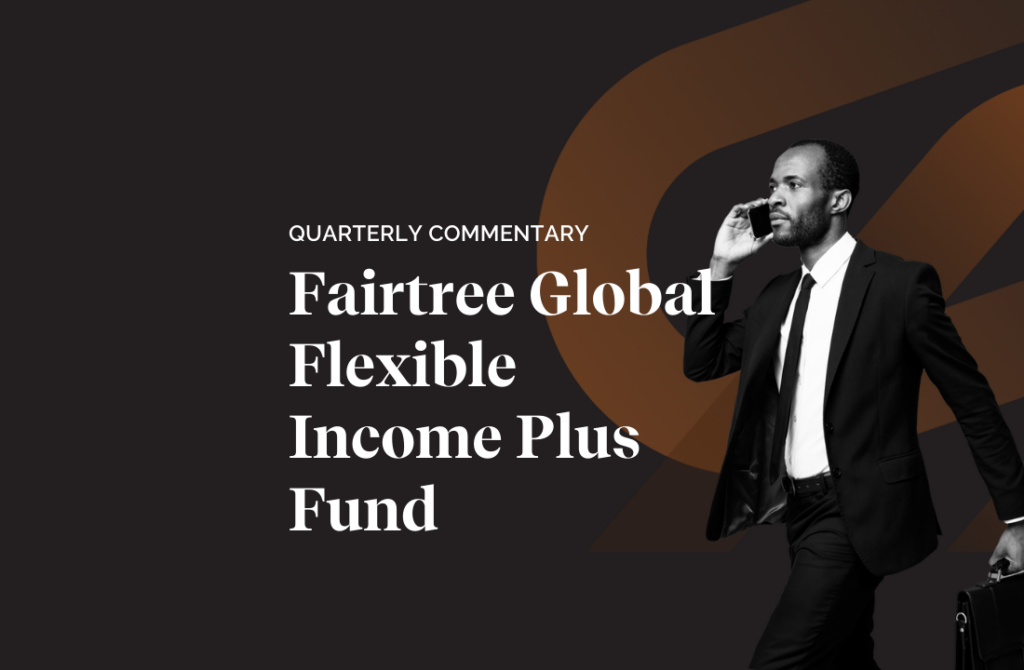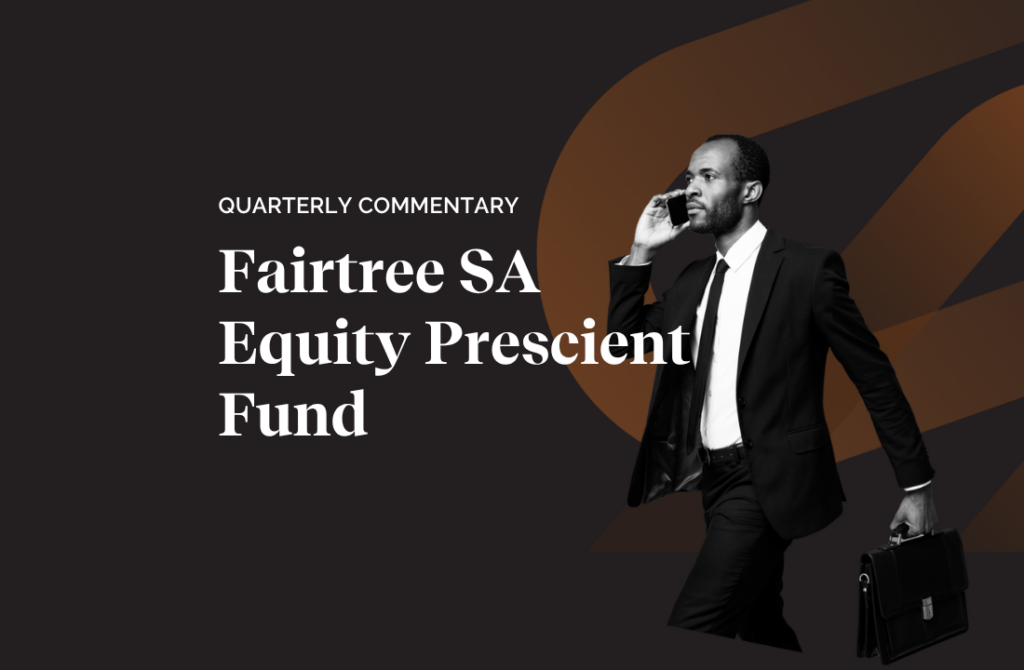
*Net of fees
Source: Prescient, 31 December 2024. Fund inception: January 2017
Benchmark: SA – Multi Asset – High Equity Category Average
Uncertainty is back
The Fund returned -0.3% over Q4 2024 and 13.4% over the year. The Fund underperformed its peer group over the quarter but outperformed over the year. Over three and five years, the Fund continues to be ranked within the top 10% of its peer group. The Fund aims to provide investors with significant positive real returns and has outperformed inflation by 5% or more over the last 12 months, three years, five years and since inception.
We expect macro uncertainty to return to markets over 2025. Not only are there question marks around the disinflationary environment that prevailed over most of 2024, but also around the impact of new risk factors that emerged post the US election. Policy uncertainty around tariffs, taxes and immigration directly impacts the outlook for inflation and central bank policy. Geopolitics and its impact on oil and trade remain uncertain. US bond yields have risen, and the US dollar has strengthened despite Fed rate cuts. The Fed has pulled back its forward guidance around future rate cuts to incorporate rising policy uncertainty. The market continues to view a soft-landing scenario for the US as the most likely outcome. We doubt the US can withstand a prolonged period of sustained high interest rates and elevated equity valuations. However, we recognise that the US remains exceptional relative to its European and Asian peers. China and Europe may take time to heal. Both regions have scope to ease policy, and at least in China, authorities have shown a willingness to support growth more aggressively.
While South Africa is not insulated from these macro uncertainties, the local fundamental backdrop is on the mend. Growth may surprise to the upside and exposure to local assets may be a defensive strategy given current valuations and the scope for foreign investors to look for growth elsewhere.
Our portfolio is well-diversified, liquid and positioned for multiple macro outcomes. We are cautious and defensively positioned towards developed markets but bold and opportunistic in emerging markets. We remain overweight government bonds, globally and locally, relative to an underweight in equities, particularly the US. We remain more optimistic about local assets. Our portfolio is well-positioned to weather slowing growth, geopolitical conflict, and sticky inflation. We remain relatively neutral on cash, waiting for signs of a more imminent economic slowdown globally. While overall defensively positioned, we have selective offensive positions that will benefit from an improved economic and political environment in China and South Africa.
This environment calls for active portfolio management and flexibility. Our investment approach leans on strong macro top-down analysis complemented by rigorous bottom-up work.
Macro overview
While 2024 was all about Politics, 2025 will be all about Policies. Almost half of the global population voted in elections last year. In many of those elections, the incumbent lost. Mostly because of high inflation and the high cost of living weighing on real wages. As we turn to 2025, inflation remains uncomfortably high in much of the developed world. Not only does this limit the scope of central bankers to continue to cut rates, but it also limits the extent to which politicians can impose inflationary policies on the economy. How aggressively will the Trump Administration push for higher trade tariffs, tax cuts and curbs on immigration? These policies on aggregate are inflationary, at least in the short term, and potentially growth negative. US growth has been robust, above trend and at least in part responsible for the recent rise in US bond yields. A rising term premium, reflecting increased future interest rate uncertainty, has also contributed to the recent rise. As we look to the next few years, the interaction between monetary, fiscal, trade and foreign policies will determine the macro backdrop. This implies increased volatility and the probability that left and/or right tail events may occur. The “consensus view” will be challenged frequently, and only the nimble and humble may thrive.
In our view, US inflation may still determine the timing, but more Fed rate cuts than currently anticipated remain on the cards. Over the short term, however, US dollar strength, high bond yields, elevated equity valuations and Trump policy uncertainty will weigh on risk assets.
Europe is weak and requires a new growth formula. It has lost its competitive advantage in cheap energy and auto production. China has outcompeted Europe in advanced manufacturing goods. The political environment in Europe is weighing on sentiment and may ultimately lead to increased fiscal spending, but this may take time. For now, Europe must rely on lower inflation and robust wage growth to support real disposable income growth and household consumption. The ECB may have to cut more than anticipated, but inflation prints remain sticky for now, and the geopolitical risks around Russia lurk in the background.
Growth in China has disappointed, and the country remains in a deflationary spiral. Overall, consumer and business confidence are at depressed levels. Supply-side measures have offset some of the weakness in the form of investments in infrastructure and manufacturing. Exports have also held up relatively well. Last quarter saw authorities take a more forceful stance in trying to revive the economy. Policymakers announced rate cuts, injected liquidity into financial markets, reduced housing market restrictions along with mortgage rates and vowed to stabilise the property sector. Fiscal measures to support local governments and consumers have also been announced. The budget deficit is expected to increase in 2025 to support consumers, the property sector, and local governments. While the equity market did relatively well last year, bond yields continued to drop, signalling growing concerns about the economy. The US administration’s proposed tariffs may weigh on China, although we doubt that the full array of tariffs will be announced and see scope for a deal to emerge. A lot of bad news has been priced for China, and policymakers have a lot of scope to support the economy. We remain optimistic that a cyclical improvement may materialise later this year.
The local economy is slowly on the mend. Economic data remains mixed but are improving on aggregate along with confidence, consumption, and credit dynamics. Most importantly, inflation remains low, which in time will allow the SARB to cut interest rates further, although the pace of cuts may initially be slow. Real disposable income levels are rising, partially supported by changes in the pension fund rules, and we expect households to be the key driver of growth this year. Rising capital investments may also provide some growth support as economic reforms are slowly being implemented. Fiscal consolidation will remain in focus and continue to drive credit risk premiums lower. We acknowledge that the political environment remains somewhat fragile despite much improvement. The biggest risk, however, stems from the external environment. US tariffs, a weak Europe and China, and pare-back rate cuts in the US may weigh on investor confidence over the next few months despite an improving local backdrop. However, asset prices are relatively cheap, and we expect more upside than downside risk.
Market review
Global equity markets struggled over the quarter. Global equities dropped -1%, with ex-US equities underperforming. US equities were up around 2.7%, mostly led by a small number of large-cap consumer technology stocks. The equally weighted S&P500 was down -2% over the quarter, showing how concentrated the US equity rally was. Europe dropped by 2.7% and emerging markets dropped by 8%. Within emerging markets, China dropped 8%.
SA equities (Capped SWIX) were down 2.1% over the quarter. General retail was the best-performing sector, up 7%, while Resources dropped by 10%. The rand depreciated around 8% over the quarter against the US dollar.
During the quarter, the South Africa All Bond index rose 0.4%, and cash returned 2%. The Bloomberg Barclays Global Aggregate Bond Index lost 5% over the quarter. Global credit also came under pressure and returned -4%.
Commodities were weak in general, with Gold (13%) and Corn (15%) being the only positive performers. Copper and Iron ore, Oil and PGMs all posted negative returns over the quarter.
Portfolio performance
The Fund returned -0.3% over Q4 2024 and 13.4% over 2024. The Fund underperformed its peer group over the quarter but outperformed over the year.
The Fund underperformed relative to its internal index, with both security selection and asset allocation detracting from excess returns over the quarter.
Our security selection within SA Equity, Global Equity, and Global Real Estate detracted from excess returns, while SA Property and Commodities contributed to them.
Within SA equity the Consumer Discretionary sector was the key performance contributor during Q4, and performance was positively impacted by positions in Pepkor (+20.2%), Mr Price (+10.34%), Absa (+8.12%), Super Group (25.2%) and British American Tobacco (+9.6%), while positions in Sasol (-28.3%), Glencore (-15.5%), FirstRand (-6.1%), Gold Fields (-8.1%) and Standard Bank (-8.50%) detracted from the performance.
Within Global Equity, our security selection and overweight exposure to Consumer Discretionary and underweight to Information Technology and Financials detracted from returns.
Within Commodities, our overweight to Gold contributed to excess returns.
Within asset allocation, our overweight to SA equity and underweight to Global Equities detracted but was somewhat offset by our overweight to Global Bonds and Commodities and underweight to Global Real Estate.
Portfolio positioning
We believe the global business cycle remains in a maturing stage. Overall, global interest rates remain high despite some monetary policy easing as inflation risks continue to worry central bankers. Along with high rates, the strength of the US dollar is exerting pressure on emerging markets, reducing the scope for policy easing. Chinese growth remains soft, industrial activity in Europe is weak, and US equity valuations are elevated. Uncertainty around Trump’s tariff, tax and immigration policies and its impact on the economy and inflation remains high. Geopolitical tension in the Middle East remains high.
In this environment, we want to focus on portfolio diversification, flexibility, and liquidity. Not only is the portfolio diversified across asset classes, sectors, and stocks, but also across various potential economic outcomes. As the probability of tail events rise, the ability and willingness to move the portfolio quickly increases.
Our portfolio has both defensive and opportunistic characteristics. We are defensively positioned for a slowdown in developed markets, where valuations are higher, and opportunistically positioned to take advantage of a recovery in emerging markets, including China and South Africa, where valuations are more attractive. The overall macro environment, however, may continue to swing between a state of robust growth, high inflation, high bond yields, a strong US dollar, and a state of labour market concerns, continued disinflation, scope for easier policy and a weaker US dollar.
We remain overweight SA Equities and underweight Global Equities, in particular US equities, where valuations are elevated, rates are high, and signs of a slowing consumer are emerging. We are more constructive on Emerging Markets and, particularly, China, where policymakers have accelerated policy easing in response to weak economic data and Fed easing. Valuations here remain attractive as a lot of bad news has already been priced into assets. Over 2024, we have increased our exposure to SA economy-facing sectors and continue to hold these.
We have a tactical underweight in SA Property after strong performance last year. While property fundamentals have improved, especially for retail and industrial, the overall outlook remains uncertain in the short term. We remain underweight Global Property.
We remain overweight in both SA and Global Fixed Income, which will benefit from a US economic slowdown. Local bond yields have fallen significantly but remain attractive on a relative and absolute basis given the outlook for lower inflation, rate cuts, fiscal consolidation and increased foreign flows into the asset class.
We are overweight Commodities, particularly gold and platinum. Gold has done well on geopolitical tensions and central bank diversification.
Notes: MSCI country indices are used where no index is shown. The internal index currently consists of 45% FTSE/JSE Capped Swix, 25% S&P1200, 2% FTSE SA Listed Property Index, 2.5% FTSE EPRA NAREIT Developed Index, 1.5% Equal Weighted SA Commodity ETFs, 18% All Bond Index & 4% STEFI & 2% US Overnight Cash.
Topics
Values-driven investing
Download our Factsheet
Download the quarterly report to view comprehensive information and performance data.

We are Fairtree
Subscribe to our newsletter
Stay informed with the latest insights and updates. Subscribe to our newsletter for expert analysis, market trends, and investment strategies delivered straight to your inbox.
"*" indicates required fields

FAIRTREE INSIGHTS
You may also be interested in
Explore more commentaries from our thought leaders, offering in-depth analysis, market trends and expert analysis.

Wild Fig Multi Strategy Hedge Fund Q2 Investor Update
Quarter 2 headlines were driven by Trump 2.0 and his policies surrounding the US tariff trade stance, the ensuing widespread global market sell-off and the subsequent 90-day pause that triggered a sharp reversal of these losses.

Fairtree Global Flexible Income Plus Fund Q2 2025 Commentary
After the very slow start for US equities during the first quarter, and the superior performance emanating from the EU and the UK, the second quarter witnessed a turnaround in fortunes with the tech-heavy NASDAQ delivering its fourth-best quarterly performance number over the past 18 years.

Fairtree SA Equity Prescient Fund Q2 2025 Commentary
During Q2, Bonds increased by 5.9% and Cash returned 1.9%. The MSCI Emerging Market Index increased by 11.9% (in USD), outperforming the MSCI World Index, which increased by 11.4% (in USD). The MSCI South Africa Index increased by 13.6% (in USD).
Disclaimer
Fairtree Asset Management (Pty) Ltd is an authorised financial services provider (FSP 25917). Collective Investment Schemes in Securities (CIS) should be considered as medium to long-term investments. The value may go up as well as down and past performance is not necessarily a guide to future performance.
CISs are traded at the ruling price and can engage in scrip lending and borrowing. A schedule of fees, charges and maximum commissions is available on request from the Manager. A CIS may be closed to new investors in order for it to be managed more efficiently in accordance with its mandate. Performance has been calculated using net NAV to NAV numbers with income reinvested. The performance for each period shown reflects the return for investors who have been fully invested for that period. Individual investor performance may differ as a result of initial fees, the actual investment date, the date of reinvestments and dividend withholding tax. Full performance calculations are available from the manager on request. There is no guarantee in respect of capital or returns in a portfolio. Prescient Management Company (RF) (Pty) Ltd is registered and approved under the Collective Investment Schemes Control Act (No.45 of 2002). For any additional information, such as fund prices, fees, brochures, minimum disclosure documents and application forms, please go to www.fairtree.com.
Highest rolling one-year return is 57.79% (Benchmark 30.65%) and the lowest rolling one-year return -9.29% (Benchmark:
-10.47%) (information to 31 December 2024). The fund has returned an annualised return of 11.01% since inception (January 2017) (benchmark annualised return of 8.06% since inception). The fund’s annualised performance over 1 year is 13.38% (Benchmark: 13.41%). The fund’s annualised performance over 3 years is 9.83% (Benchmark: 8.32%). Fund returns disclosed are annualised returns net of investment management fees and performance fees. Annualised return is weighted average compound growth rate over the period measured. Fund investment risk indicator level: moderately aggressive. Full performance calculations are available from the manager on request. Annualised performance shows longer term performance rescaled to a 1-year period. Annualised performance is the average return per year over the period. Actual annual figures are available to the investor on request. Highest & Lowest return: The highest and lowest returns for any 1 year over the period since inception have been shown. NAV: The net asset value represents the assets of a Fund less its liabilities. *The forecasts are based on reasonable assumptions, are not guaranteed to occur and are provided for illustrative purposes only.
This document is confidential and issued for the information of the addressee and clients of Fairtree Asset Management only. It is subject to copyright and may not be reproduced in whole or in part without the written permission of Fairtree Asset Management. The information, opinions and recommendations contained herein are and must be construed solely as statements of opinion and not statements of fact. No warranty expressed or implied, as to the accuracy, timeliness, completeness, fitness for any particular purpose of any such recommendation or information is given or made by the Manager in any form or manner whatsoever. Each recommendation or opinion must be weighed solely as one factor in any investment or other decision made by or on behalf of any user of the information contained herein, and such user must accordingly make its own study and evaluation of each strategy/security that it may consider purchasing, holding or selling and should appoint its own investment or financial or other advisers to assist the user in reaching any decision. The Manager will accept no responsibility of whatsoever nature in respect of the use of any statement, opinion, recommendation, or information contained in this document. This document is for information purposes only and does not constitute advice or a solicitation for funds.
About you…
By proceeding, I confirm that:
- To the best of my knowledge, and after making all necessary inquiries, I am permitted under the laws of my country of residence to access this site and the information it contains; and
- I have read, understood, and agree to be bound by the Terms and Conditions of Use described below.
- Please beware of fraudulent Whatsapp groups pretending to be affiliated with Fairtree or Fairtree staff members.
If you do not meet these requirements, or are unsure whether you do, please click “Decline” and do not continue.






